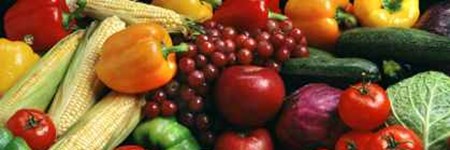Stroke diet
DEFINITION
A Post-Stroke Diet will need to be individualised for people
with conditions such as high blood pressure, high
cholesterol/hardening of the arteries, diabetes etc. Generally, the
Post-Stroke Diet is low in salt, fat and cholesterol. Stroke
survivors may have special needs which also should be
considered.
with conditions such as high blood pressure, high
cholesterol/hardening of the arteries, diabetes etc. Generally, the
Post-Stroke Diet is low in salt, fat and cholesterol. Stroke
survivors may have special needs which also should be
considered.
DESCRIPTION
- Recent clinical data suggests that a diet high in red and
processed meats, white flour, sweets and desserts may increase
Stroke risk, whereas a diet higher in fruits and vegetables, fish
and whole grains may protect against Stroke. - People with high blood pressure, high cholesterol, diabetes,
bowel and bladder function and other medical complications will
require individualised diets following a Stroke. - In general, the diet following a Stroke should be low in salt,
fat and cholesterol. - It is important to maintain a healthy weight.
- Some people will have chewing or swallowing difficulties after
having a Stroke. It is important that they continue to eat a
variety of nutritious foods and not the same easy-to-eat foods
repeatedly. They may also need to be monitored so they do not choke
on their food. – Loss of appetite may occur for a number of
reasons, including lack of desire for food, lack of taste
sensation, fear of choking because of chewing/swallowing problems,
mouth discomfort from ill-fitting dentures or medication. Carers
should provide constant encouragement in these instances. - Special utensils which make eating easier are available for
physically impaired Stroke survivors. - Visual perception may be impaired following a Stroke. Carers
should encourage Stroke survivors to look for all the food on their
plate. - Eating meals may take longer following a Stroke. The frequency
of meals may need to be increased if assistance is required at each
meal time.
SAMPLE MEAL PLAN
The following meal plan has been recommended for this
condition:
condition:
BREAKFAST
- 1 – 1 1/2 cups rolled oats porridge (blend if necessary) or oat
flake cereal or semolina with added oat bran and raw wheatgerm and
low fat milk or soy milk. - Progress to toast with mashed sardines.
- Half -1 cup stewed or pureed fruit or fresh fruit juice.
- Herbal tea, tea or coffee (thickened if necessary).
- Water in between meals.
MORNING TEA
- Mashed banana or pureed peaches or pears with low fat yoghurt
. - Progress to pieces of fruit with low fat yoghurt.
- Fruit juice, herbal tea, tea or coffee.
LUNCH
- Vegetable soup (low salt) with added kidney beans or 3 beans.
Blend if necessary. - Mashed sardines.
- 1 cup mashed potato or sweet potato.
- Progress to rice or pasta or bread.
- Plenty of vegetables, mashed or pureed as required.
- 1 cup stewed fruit.
AFTERNOON TEA
- Semolina or rice pudding made with low fat milk.
- Progress to pieces of fruit with low-fat yoghurt.
- Fruit juice, herbal tea, tea or coffee (thickened if
necessary).
DINNER
- Low-salt vegetable soup (blended if necessary).
- 120-150g tender, lean mince or chicken with low salt
gravy or 1 – 1.5 cups salmon or tuna mornay on low fat
milk or 2-3 scrambled eggwhites. - 1-2 medium potatoes or sweet potato, mashed with low fat
milk or well-cooked rice. - Plenty of vegetables, mashed or pureed.
- 1 cup stewed or canned fruit with low fat yoghurt.
- Herbal tea, tea or coffee.
ORGANISATIONS & SUPPORT GROUPS
See the National Stroke Foundation topic on the
Healthpoint.
Healthpoint.

